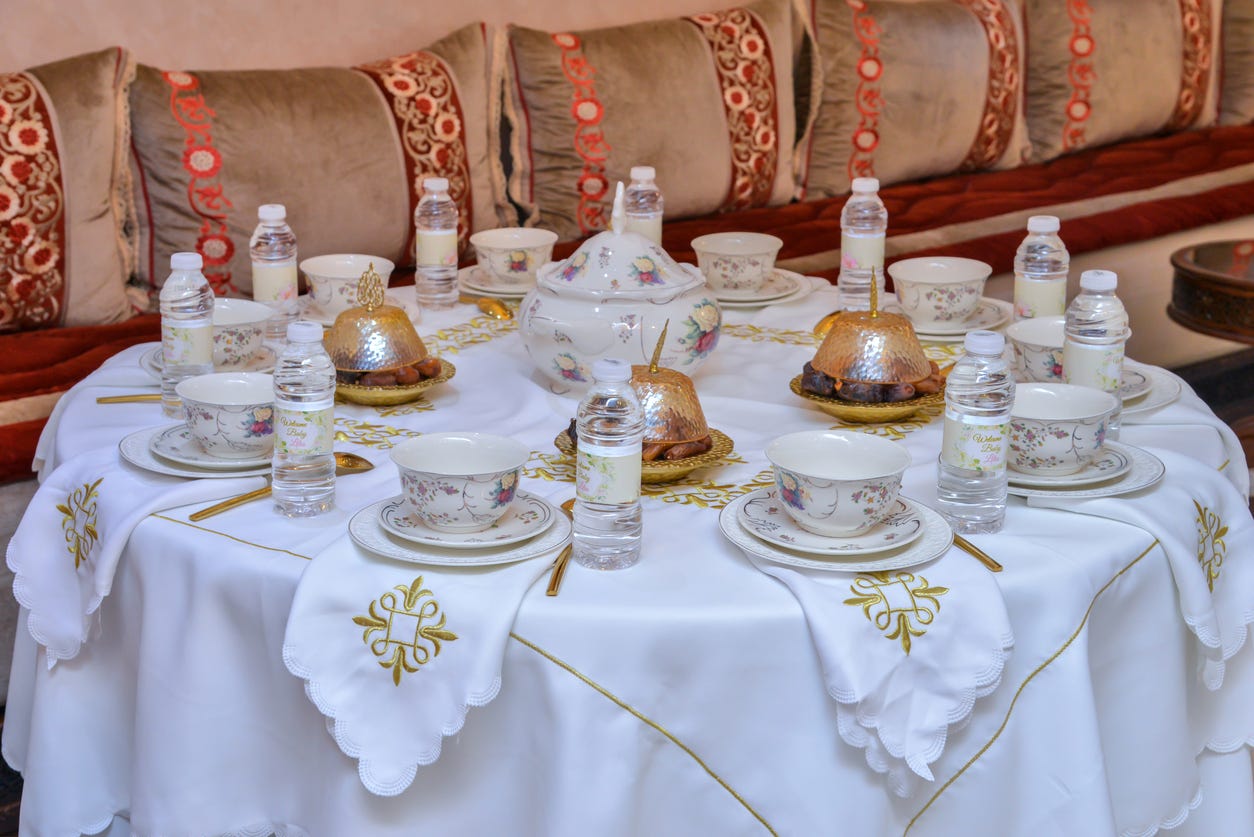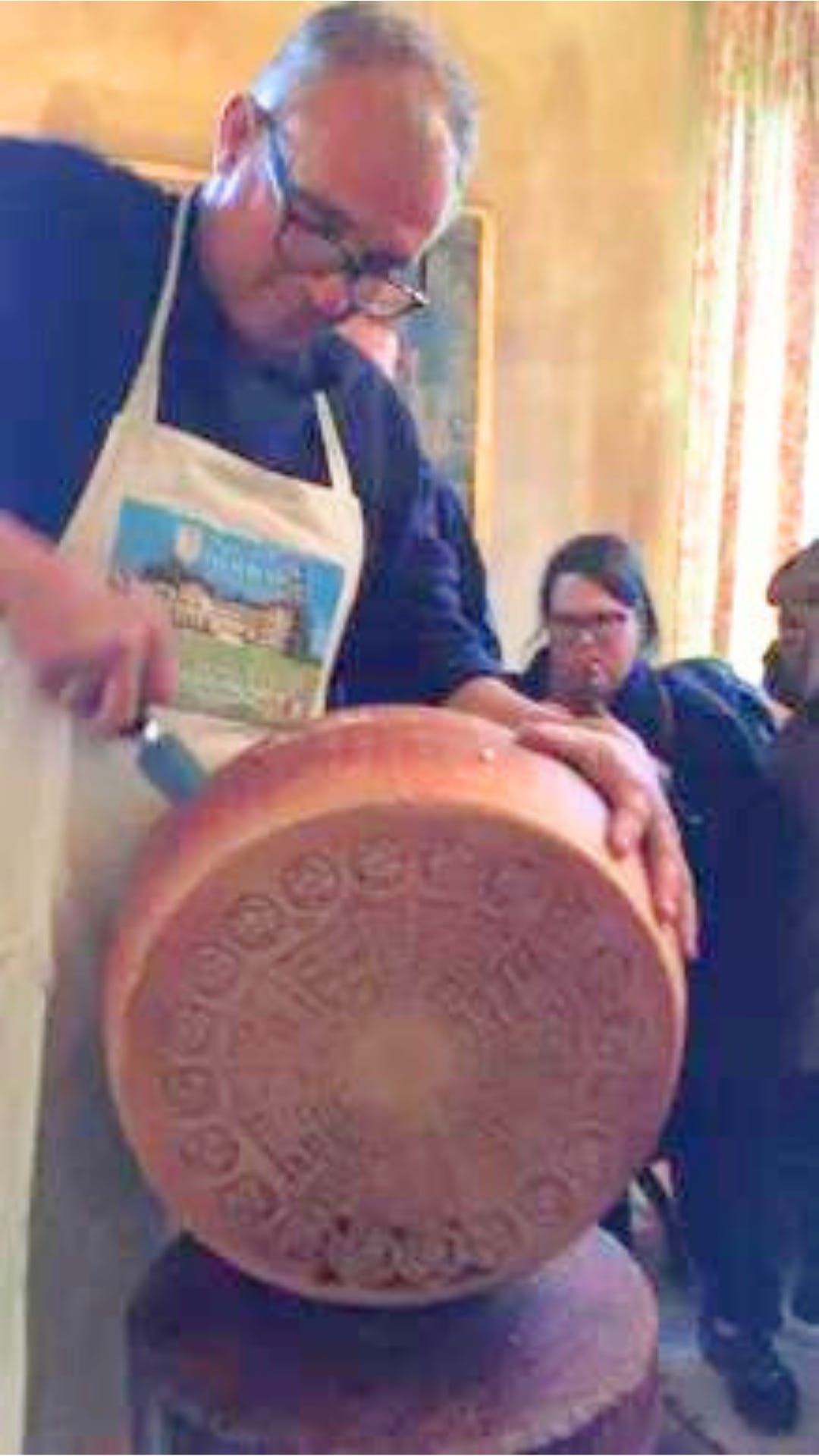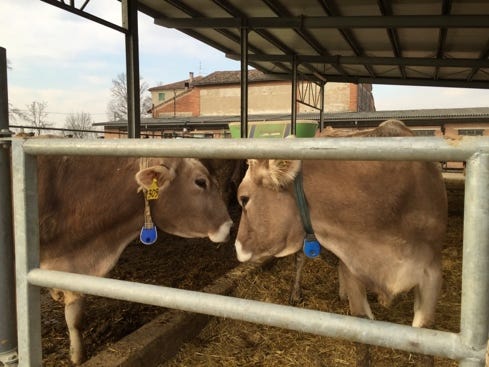6 meals from my travels I'll never forget
Memorable meals in Spain, Turkey, France, Morocco, Italy, and Greece
According to many different surveys about travel, great meals and great food are the reason people travel. In this survey by Supermarket Guru (aka Phil Lempert), 88% of respondents consider gastronomy to be a defining element of where they travel.
I couldn’t agree more. Here are six meals that I’ll never forget.
Turkey – A Turkish potluck with 29 home cooks
This is a meal that changed Chef Ana Sortun’s life, and one that was recreated for an Oldways Culinaria (culinary journey) in Gaziantep, Turkey in March 2012 — a most memorable meal I will never forget. As Ana describes it:
It was on my first trip to Turkey in 1997 that I had a revelation, and my culinary journey took a turn from west to east. I was invited to study Turkish cuisine with a woman named Ayfer Unsal in Gaziantep—the southeastern part of Turkey and the country’s gastronomic capital. The very thought of Turkey was foreign to me—I envisioned flying carpet, genies and covered women hidden in veils. Ayfer welcomed me with a lunch staged by some of the townswomen. Each of them had brought her family’s specialties in my honor: everyone had a different version of the bulgur based kofte or kibbeh, some with lamb, others with potato and pumpkin; salads dressed with sweet-tart pomegranate molasses; fresh and intriguing vegetables spiked with the spice and herb combinations which are now staples in my kitchen. It was a feast, the likes of which I had never before experienced.
For the Oldways Culinaria in Gaziantep, now a city tragically impacted by the February 2023 earthquake in Turkey, Ayfer graciously recreated this potluck lunch for the group. We gathered in Kavaklik Park in the middle of Gaziantep—40 Americans and 29 home cooks from Gaziantep—to learn, eat and celebrate the special dishes representative of their families, traditions and cuisine. The list is too long to list all of them; here are a few to whet your whistle:
· Wheat berries with yogurt and Maras pepper
· Lentils with chickpeas, wheat berries and tarragon
· Green almonds cooked with chickpeas, yogurt and lamb
· Mung beans with walnuts and parsley
· Smokey eggplant with lamb and tomatoes
· Swiss chard and black-eyed peas
· Okra with lemon and lamb
· Tomato and pepper salad with pomegranate molasses
· Rice with dried eggplant and red pepper
· Green olive and walnut pie with pomegranate molasses
To add to the magic of the meal, Ayfer asked each woman to describe the dish she brought. It was almost like an award ceremony, with each coming to the microphone. No Oscar statues to hand out, but we brought planers and other kitchen tools from the US to give to all the cooks.
2. Morocco – A home-cooked meal for 250 Americans
Oldways first visit to Morocco was in 1994, one of the early Symposiums where we brought American journalists, chefs, cookbook authors, food retailers and scientists to different countries for week-long symposiums*.
Traveling from Casablanca to Rabat to Fes, the group of more than 100 of us stopped first in Meknes, the region in Morocco known for olive oil and argan oil. After touring farms of almonds, olives and fruit trees, we were invited, along with a number of dignitaries, to have lunch at the home of Moulay Messaoud Agouzal, the largest olive oil producer in Morocco.
Not everyone can host 200 for lunch. Mr. Agouzal could. As Phyllis Richman wrote in the Washington Post, “We were a hard group to impress, but he managed.”
In the Post, Phyllis describes the details perfectly. Here’s how she sets the scene:
“The dining pavilion did it for me. Gold-rimmed glasses -- service for 250. More than two dozen round tables, their floor-length floral cloths matching the cushions of the 250 identical chairs. And when the first course was served, dozens of waiters paraded in, carrying identical domed silver trays, each nearly three feet in diameter, one for each table. Moulay Messaoud Agouzzal invited us all to eat. With our hands, Moroccan-style, right hand only.”
The first course was the classic Moroccan pie with pigeon or chicken, almonds, raisins wrapped in dough like phyllo—the b’steeya. This one was enormous. Next came the course that is seared in everyone’s memory: Mechoui, roast lamb. It wasn’t roast lamb like any of us had ever had. Incredibly, each table received a whole baby lamb on a platter, which we continued eating with our right hand. I can still see myself sitting at the table, next to Vogue’s Jeffrey Steingarten, staring at the lamb, figuring out how to manage. Next came chicken, followed by a variety of tagines, and then couscous. Wondering about dessert? Unbelievably, there was plenty. We were served Timkilin, a Berber dish, along with ice cream, cakes and cookies.
On the bright side of things, if you are concerned about the sheer amount of food and waste, leftovers are always given to the cooks and staff. Given the size of the meal, the number of people involved in cooking and serving was sure to be almost the number of people at the lunch!
Oh, and the runner-up in Morocco? A dinner prepared by a team of American chefs, including Terrance Brennan, Jimmy Burke, Jesse Cool, Matthew Kenney, Todd English, Bobby Flay, Evan Kleiman, Deann Bayless Catherine Brandel, Chris Schlesinger, led by Gordon Hamersley, at the legendary La Mamounia in Marrakech.
3. Greece - A word-fired lunch in the mountains of Crete
If I had to guess just one place that might make it to the top of many people’s list as a memorable meal during our Culinaria in Crete in 2017, it would be Dounias, a traditional taverna high in the mountains above Chania.
Unless you see the photos, it’s hard to convey the magic of Dounias. It is quintessential of the old ways. Stellios Trilyrakis and his family have created a place like no other. Food is cooked outside in clay pots or in a wood-fired oven. The menu is not known ahead of time, although Stellios is famous for his snails, wild greens and purslane salad, olive-oil fried potatoes, chickpeas and local beans with vegetables, and bulgur trahana with eggplant and his homemade bread. That is just what we had; a memorable meal, to be sure.
Before we ate lunch, he took us to see his olive trees, garden and to meet his two horses, perched on a terrace of the mountain. Then we all sat down at long tables to enjoy a Dounias Oldways lunch, served with local wine in tin cups. After lots of photos and quite a few hugs, and after awarding Red Sox caps to Stellios and his wife, we said goodbye and set off for the winding drive down the mountain to the seaside near Chania.
Spain – lunch with longtime friends
My most memorable meals in Spain are always the meals I enjoy at the home of Fausto and Mar Luchetti, longtime friends and colleagues. While the meals may have more of an Italian slant, what’s so memorable is the ease, the grace, the beauty, and of course, the meal is always delicious.
I’m struck by the same thing whenever I spend time with them. Their meals are unbelievably delicious, and the preparations appear effortless. This thought is at the core of Oldways messaging: that healthy eating is very tasty and is approachable—it’s not rocket science. Or, in Fausto’s words,“The lunch we had is a normal Mediterranean lunch, the one and only one we have at home.”
Here’s what we had: Spanish tapas (small bites), pasta with tomatoes and tuna, fruit in parchment, along with wine from Spain and Italy. Plus, espresso and biscotti, and if game, grappa or mandarello (a liqueur made from mandarine oranges).
And here’s how you can do this too!
Tapas: Assemble a selection of appetizers on small plates, and choose a sparkling, white or rosé wine. Fausto made hummus and guacamole, served with jamon Serrano (Spanish dry-cured ham), cheese and bread. You can add olives, vegetables. There are no rules. Take a few minutes to make everything look pretty— it pays off —and your guests will feel very welcome, like they do at Fausto and Mar’s.
Fausto and Mar spend their summers on the island of Pantelleria, a small volcanic island between Sicily and Tunisia, and Fausto often chooses to cook a Sicilian-inspired pasta dish. The tomato and tuna pasta sauce starts off with garlic and onion and olive oil; Fausto then adds cherry tomatoes, tuna, tomato sauce, and spices, including dried fennel. For a condiment (a special added flavoring), he toasts bread crumbs and adds chiles to make it spicy. For the pasta nothing would do but a specific Sicilian pasta shape – busiata Trapanese — that he bought in Italy and brought to Madrid. He cooked the pasta al dente, added the pasta to the sauce, and brought it to the table in the pan!
For dessert, Mar made Fruit in Parchment. Make it part of your repertoire – it’s simple, it’s delicious, it’s healthy and it’s beautiful! Mar used mangoes, peaches, pomegranate seeds, melon, plus sticks of cinnamon and vanilla, and a touch of wine. Try this recipe first (see below), and then experiment—let your mind be bold!
To complete the meal, Fausto and Mar offered coffee, tea, espresso, grappa or mandarello—an orange version of limoncello—served with tiny, delicate biscotti and Parmigiano biscuits.
Always beautiful and elegant, always delicious, always healthy.
4. Italy – A memorable meal at the Valserena farmstead
If you’re planning to travel to the food region of Italy, Emilia Romagna, a visit to a Parmigiano Reggiano dairy is must-do (join us there in April 2024!).
When we last visited, we got very lucky with the choice of a dairy. Carrie Blakemore of The Rogers Collection, an importer of quality artisan foods, connected us with Valserena, a farmstead Parmigiano Reggiano producer just outside the city of Parma. (A farmstead dairy is one where the milk used to make the cheese comes from cows on the farm where the cheese is produced.) Valserena is a 5th generation producer operated today by Giovanni Serra and his sister Antoinetta—who is a veterinarian and knows each of their Brown Cows by name.
Torrential rain punctuated the morning we visited Valserena. It didn’t matter. We loved everything about the visit (seeing the production, the salting, aging and meeting all the cows, even newly born calves). Then, the Serra family invited us (40 people) into their gorgeous house for lunch. Giovanni even did a “cracking” or opening of a wheel of Parmigiano Reggiano, something that is very special. The lunch featured Parmigiano Reggiano (of course!), ricotta, Prosciutto di Parma, water, and wine. Giovanni’s wife and daughter each made a dessert – ricotta pie and fruit crostada served with homemade ice cream – and challenged all of us to say which one was better!
Even better, we are visiting Valserena again in April 2024. Why don’t you join us?
France - The three-star Michelin treatment at Guy Savoy
In 2002, we were planning a Culinary Tour and Continuing Medical Education course in and around Bordeaux, in collaboration with the Harvard School of Public Health (HSPH). As hosts, we always paired scientific experts like Walter Willett of HSPH and Serge Renaud, father of the French Paradox, with culinary experts, because food knowledge is just as important as the nutrition science. The culinary experts for this Culinaria were two legends — Paula Wolfert and Patricia Wells. Pinch me! Imagine! Paula and Patricia together along with Walter and Serge — how lucky could we be.
We got even luckier. Dun Gifford, Oldways’ founder, and I met Paris with Patricia to discuss the cooking demonstrations and meals. In addition to writing cookbooks and running her cooking school, Patricia reviewed restaurants for the International Herald Tribune. She’d recently given Guy Savoy a very positive review. This was important, because as described by Patricia in the New York Times in early March 2002, “Guy Savoy, long considered a three-star chef despite his ongoing two-star status, finally received the top award.”
Guy Savoy was where we met with Patricia Wells. Pinch me again! It’s not hard to imagine the incredible three-star treatment Patricia (and Dun and I) received. From the beginning champagne to the limousine ride home, it was a meal of a lifetime. However, because of my inexperience and because the meal had so many courses, champagne, and wine, I only remember la toute experience. Incroyable!
This begs the point that going out to meals is, of course, for the food. However, the whole experience – planning, eating, and then, recollecting —is also so much a part of the pleasure. It is these memories that continue to bring a joy that makes our lives so much richer and special.
For pinch-me meals of your own, take a look at Oldways current offerings of Culinarias and sign up for the one that makes your heart sing.
Upcoming tours include Parma, Greece, Piedmont, and Croatia. Our previous four trips have sold out—don’t wait to save your seat!
* Oldways symposiums educated Americans about the Mediterranean Diet and olive oil -- journalists wrote stories in newspapers and magazines; chefs added new dishes to their menus and put olive oil on their tables; cookbook authors wrote a wide variety of new cookbooks; food retailers bought olive oil and other Mediterranean products; and scientists made presentations about the health benefits of the incredibly delicious Mediterranean Diet.











Agree with your memorable and glad that I experienced a few with you!